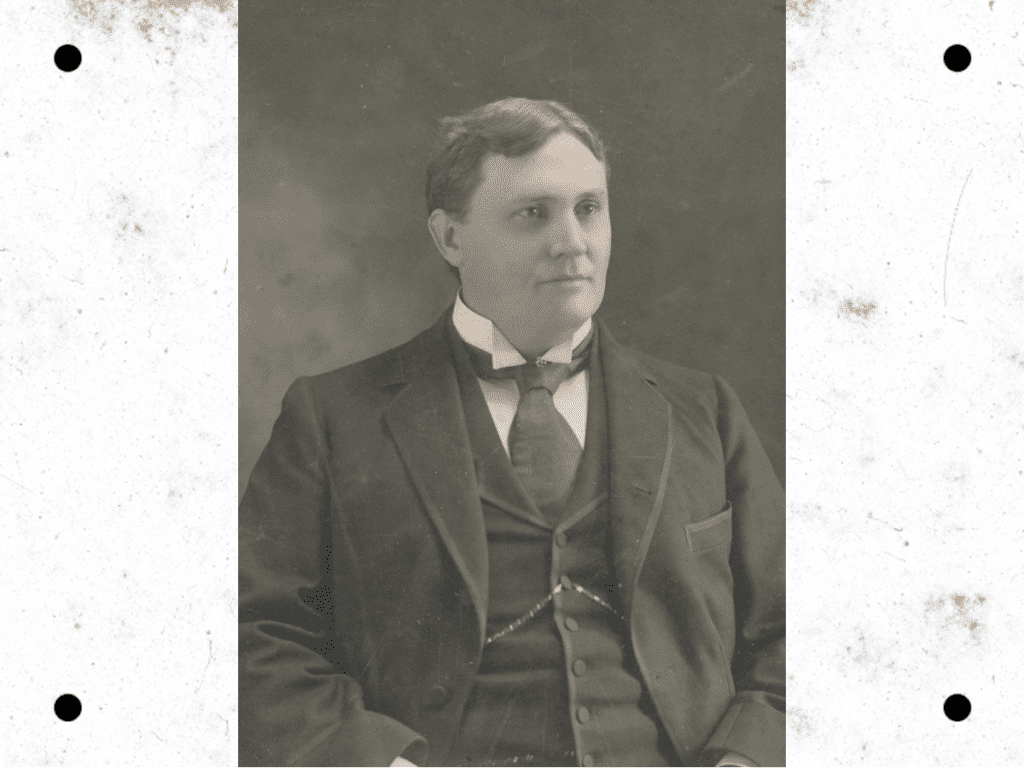Bernard P. Wagner, born in Sidney in 1865 to the large and well-known family of Mathias and Anna Wagner, was a brilliant and talented man in many fields. He was an artist, an inventor, an architect, town-planner, nurseryman, landscape architect, real estate developer, and most prominently known as the driving force behind the success of internationally known Wagner Manufacturing.
His first venture was to take the Wagner Arcade downtown into a new phase of development when he returned to Sidney after attending St. Mary’s Institute (later University of Dayton). He immediately began new promotions and added many different product lines at the Arcade. Realizing a need for cash control, he invented a cash register and received a patent for it. Not having the capital to manufacture it at that time, he offered it to John H. Patterson of NCR fame, but rejected the paltry offer made. About 6 months later, a company called the Osgood Cash Register of Detroit offered him $1000 for the patent. He accepted the offer only later discovering that that company was a buying blind for the ruthless industrialist John H Patterson. Similarly, he created the Wagner calculator about this time as he thought it would aid in his businesses. This all occurred before he was even 21 years old.
By July of 1891, BP. had guided the family business interests in a new direction, the cast iron cooking utensil business, then called holloware. B.P. had visions of making it lighter and grinding its interior to improve the product. B.P. with his usual promoter perspective decided to make a huge exhibit for the Columbian Exposition in Chicago in 1893, which was hugely successful and garnered the company a gold medal for product excellence. Before that Exhibit was even over, however, B.P. and some workers at home experimented with the newly created substance called aluminum that had been patented by Charles Hall at Oberlin College. Secretly experimenting with that back in Ohio, BP had the idea to pour the new metal into iron sand molds and make beautiful utensils. This was tried on a few skillets. Quickly they shipped them to Chicago where they were a great success. Thus, Wagner was the first company in the world to make aluminum cooking utensils.
Ever the inventor, BP invented a ball bearing waffle iron as well as an aluminum line designated as “Colonial Design” for tea kettles, coffee pots, sauce pans, etc. When B.P. could, he bought other patents including Krusty Korn Kob Pan, which baked corn bread in to the shape of an ear of corn and was used widely during WWI when wheat flour was scarce. During this time, he also wrote all of the sales literature, designed the catalogs and guided the advertising policy for the entire company.
By 1900, BP acquired an 80-acre farm west of downtown Sidney in the area of today’s Wagner Street. To the 30-acre stand of primitive trees and three ponds within that acreage, he added winding gravel roads, a cannon and large flagpole at the entrance, and studded the entire park with massive plaster of paris statuary from the old Columbian Exposition. This became known as the Wagner Park Conservator and eventually extended into 170 acres. After building a greenhouse there, he started into the nursery business, advertising in national publications and eventually building a list of 77,000 names to which he mailed catalogs twice a year. Always full of innovative ideas, Wagner then added a landscaping department that was so successful he was asked to do the landscaping at the Ohio State Capitol grounds as well as a number of estates in West Virginia, and southern Ohio. He supported the creation of common beauty areas within Sidney. Always interested in the beautiful and being naturally artistic, BP was a frequent contributor to landscape magazines and later published the book Landscape Gardening for Amateurs.
He was widely known for his efforts to develop Sidney and erected over 100 residences in the town along with platting many additions to the city. It was he who developed the south end of Sidney, but most notable were his improvements of the development known as Bon Air. He began the Wagner Real Estate company which survives today.
His sudden death in 1923 was mourned by all of those in Sidney who had benefitted from his energetic and artistic desire to make Sidney a commercialized city, which was also beautiful.
